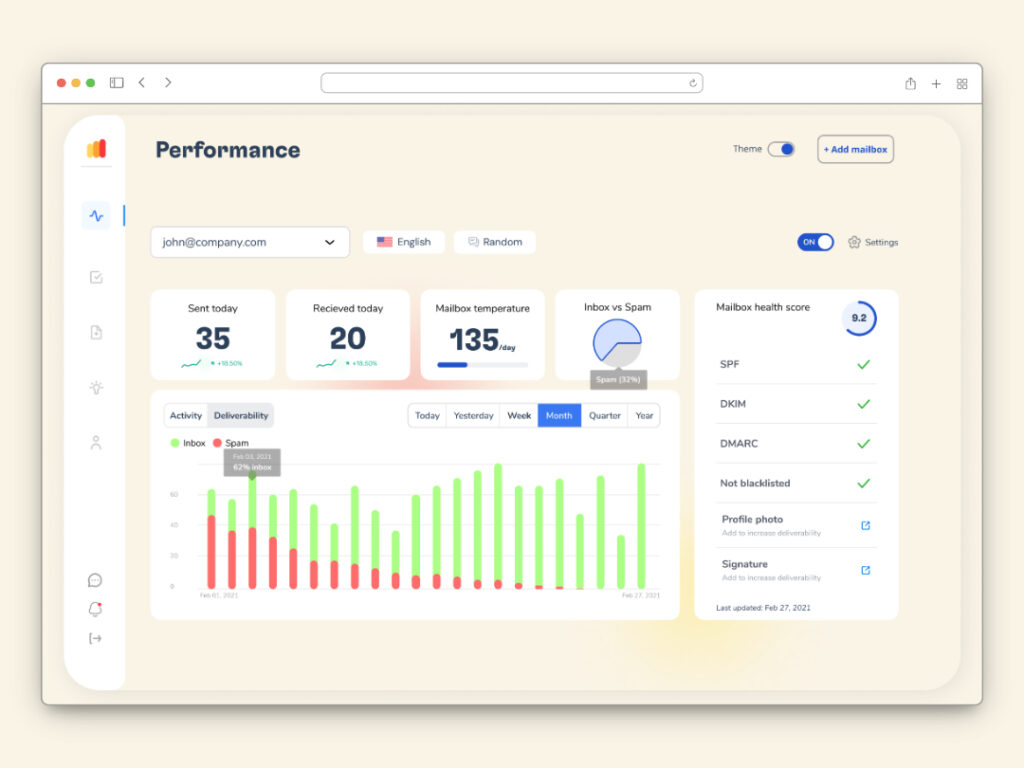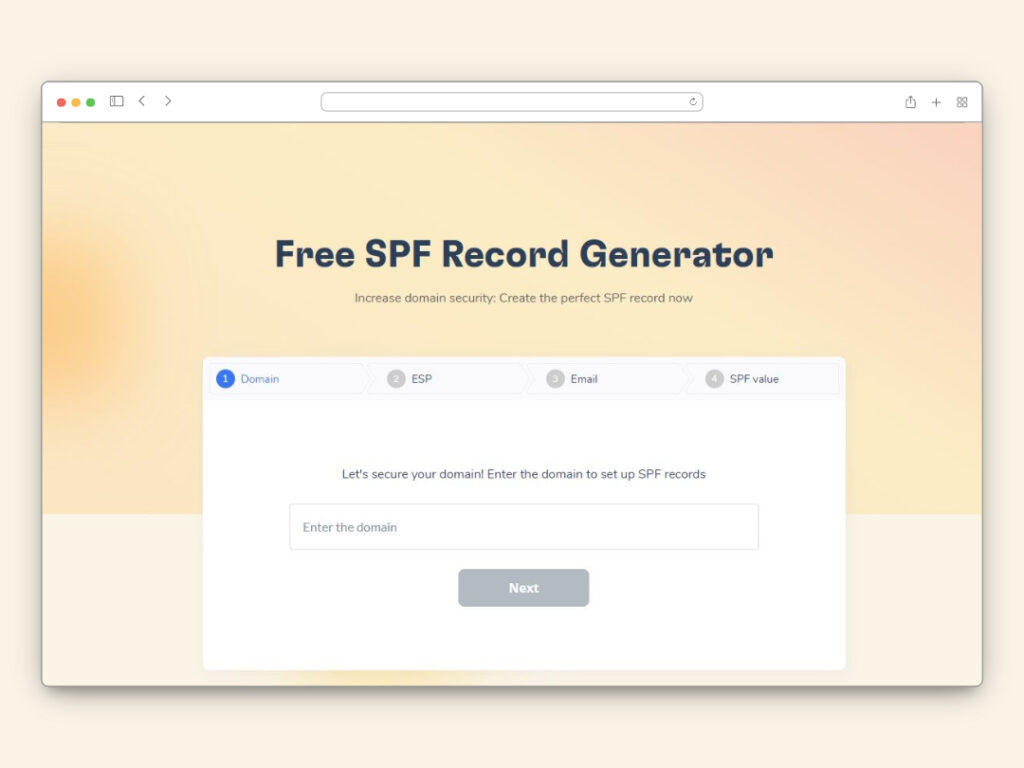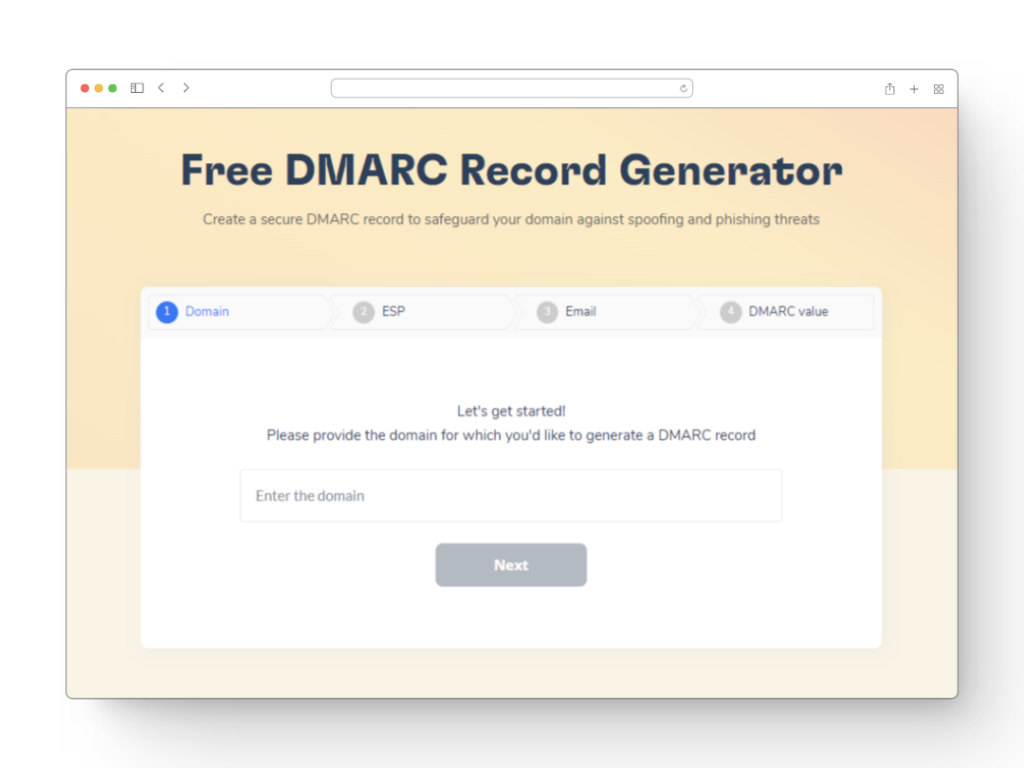With an industry average open rate of about 20%, your email strategy continues to fight shorter attention spans in addition to competing with others for attention. Within the field of digital marketing, email open rates are more than simply numbers; they are important markers of relevancy, involvement, and eventually the success of your efforts.
We’ll go over doable tactics in this post to increase these rates, including employing cutting-edge apps like Warmy.io and figuring out when to push “send.” These tips are meant to improve your email game whether you’re trying to change your strategy or just polish your approach.
What is an email open rate?
An email open rate pertains to how many receivers of a particular email open it out of all those sent overall.
How to solve for it:
- Divide the number of opened emails by the number of delivered emails (apart from those that bounced)
- Multiply the result by 100
This statistic gives you clear information about how well your email marketing is working when it comes to drawing in and keeping your readers interested.
For several reasons, email marketing success depends on tracking email open rates. Higher open rates point to well-targeted email lists, compelling subject lines, and relevant content. On the other hand, a low open rate may suggest problems with email deliverability, a weak subject line, or a lack of audience relevance.
Through A/B testing several components, improving targeting techniques, and improving content quality to increase overall engagement, marketers may optimize their email campaigns by continuously monitoring their open rates.
Historical trends in email open rates (2015-2023)
Email open rates have varied year after year due to changing customer behavior, technical advancements, and email marketing strategies. This overview shoes the average open rates from 2015 to 2023 along with a description of the trends that have affected these adjustments.
2015–2017 (21-22% average open rates)
Better targeting and personalization methods were a major factor in the steady rise in email open rates throughout this time. Better understanding of their audiences by marketers through the use of increasingly complex data analytics resulted in more interesting and relevant content.
2018 (20% average open rates)
Email saturation—a result of users receiving more emails than ever—may be to blame for this decline.
2019 (21.5% average open rates)
This year saw a slight recovery. Expanding use of mobile-optimized email designs addressed the expanding number of people accessing emails on mobile devices, and innovations in segmentation and customization had a big impact.
2020–2021 (22-23% average open rates)
The COVID-19 epidemic significantly affected digital communication methods. This was brought on by individuals depending increasingly on digital means of communication during lockdowns and social isolation policies.
2022 (21% average open rates)
Open rates slightly fell, probably as a result of modifications as the world gradually adjusted to new standards following the pandemic. The shifting expectations and actions of consumers required marketers to reevaluate their tactics.
2023 (20.5% average open rates)
With improved integration of AI and machine learning technology, email marketing techniques have matured and are now offering even more sophisticated personalization and timing optimization options.
Discussion on trends and changes
Enhanced personalization and segmentation
Marketers may now better divide up audiences and customize communications according to each person’s actions, tastes, and previous contacts.
Rising of mobile optimization
To enhance user experience and engagement, emails have been made mobile-friendly with succinct content and simple-to-click links.
🎥 Watch Video: How to Create Mobile-Friendly Emails That Land in the Inbox
Integration of AI and automation
Despite obstacles, strong open rates are maintained in part by the growing use of AI and automation to optimize send times and customize email content at scale.
Privacy and regulation
How data is gathered and utilized has changed as a result of more open, consent-driven marketing tactics brought about by changes in laws such as GDPR.
Consumer expectations
As they anticipate more value-driven material that honors their time and preferences, consumers are becoming more picky about the emails they open.
Top 10 strategies to increase email deliverability
1. Use an email warmup tool
Anyone trying to build a respectable sender reputation needs to warm up their emails. Sending emails from a fresh email address or domain for the first time means there is no sending history. Your emails may end up in spam folders or, worse, not be delivered at all if internet service providers (ISPs) consider emails from this new address to possibly be spam. Over time, ISPs can identify and trust a new email address by progressively sending more emails from it and generating user activity.
Building your sender’s reputation is essential to increasing email deliverability, and warming up an email address helps with that. A solid reputation guarantees that your emails go to the inboxes of the recipients rather than the spam bin, which raises the possibility that they will be read and clicked.
Try Warmy.io for 7 days (for free!) to experience the warmup process
Warmy.io is designed to automate and simplify the email warm-up process. Warmy.io gradually increases the number of emails sent from your account to a network of real email addresses that actually interact with these emails. Such interactions include opening emails, marking them as important, and replying to them. These positive engagements boost your sender score, which is crucial for achieving high deliverability rates.
Additionally, Warmy.io provides analytics and feedback on your sending practices, helping you optimize your email strategies for even better deliverability. Get your 7-days free trial without credit card.

2. Optimize the email subject line
Increased open rates need strong email subject lines. Once your emails land successfully in an inbox, the subject line is responsible for attracting the recipient to read the email. Some tips you can immediately start applying:
- To make sure they appear on mobile displays, keep your subject lines short—ideally under 50 characters.
- To boost relevancy, provide customization, such using the recipient’s name or specifics about their hobbies.
- Phrases like “limited time offer” provide a sense of scarcity or urgency, which promotes quick response.
- Use interesting questions to spark interest, and actionable language using verbs like “Discover” or “Get” to create enthusiasm.
- To emphasize lists or fast reads, use numbers
- Avoid using terms like “Free” or “Guaranteed” that could set off spam filters.
- To enable ongoing improvement and increased email interaction, always test several subject lines to see which ones your audience responds to the most.
🔖 Want to know more? Read: Best Practices for Email Subject Lines and 70 Examples
3. Maintain a clean mailing list
Retaining good email deliverability and engagement rates requires frequent cleaning and upgrading of your email list. Low open and high bounce rates from an old or dirty list might harm your sender reputation with email service providers.
Check out this list of tools for email list hygiene.
What is involved exactly when it comes to cleaning email lists? This includes either updating or deleting faulty email addresses and removing inactive or unresponsive subscribers. This procedure lowers the possibility of your emails being flagged as spam and helps make sure that recipients are actually interested in receiving them.
Furthermore, more precise evaluation of the success of your email campaign is made possible by a clean mailing list. Your email effectiveness is more apparent when your list is made up only of active subscribers, which allows you to make more strategic and focused marketing choices.
Putting in place routine clean-ups, say, after each big campaign or at least twice a year, guarantees the most potential efficiency from your marketing efforts. This proactive strategy can guarantee better inbox placement and improved conversion rates, therefore improving the general health of your email marketing efforts.
4. Perform email deliverability tests
As with anything else, you can’t fix or solve a problem if you don’t know what it is. Ensuring that your email marketing initiatives get into the inboxes of their intended recipients depends critically on email deliverability testing.
Warmy.io offers a free email deliverability test tool that is easy to use and provides valuable insights into how your emails are performing. Other ways this free test can help:
- Find possible obstacles that could stop your emails from reaching their recipients, like problems with your email server configuration, email content that triggers spam filters, or reputation of your IP address.
- Determine how well your infrastructure and email sending procedures are working. Through the identification and resolution of problems before they affect the efficacy of your campaigns, these tests protect your sender reputation and raise the general success of your email marketing initiatives. High deliverability rates raise the possibility that people will see and respond to your emails, which raises interaction and conversion rates in the end.
🎥 Watch this video to learn more about Warmy.io’s free email delivery test.
5. Segment your audience
Organizing your email list into segments enables more focused and successful email marketing outcomes. Divide your audience according to particular factors, including behavior or preferences, and you can provide very relevant material that boosts interaction. Because each communication feels individualized, this customized strategy increases open and click-through rates as well as client retention.
Segmentation also makes it easier to divide up marketing budgets by concentrating efforts on the most responding groups to get the most benefits. It also makes it possible to test precisely within segments, which helps you to improve tactics for improved marketing results overall. In the end, segmentation increases subscriber happiness and loyalty, guaranteeing the intended effect of your marketing communications.
🔖 Read also: Tools for segmenting the customer base
6. Ensure email authentication
Establishing and preserving the reliability of your email communications depends critically on mail authentication. Through the prevention of email spoofing and phishing assaults, you can safeguard your email reputation and confirm that emails sent from your domain are authentic.

SPF (Sender Policy Framework) confirms that emails sent from a domain are allowed by the domain administration, thus helping to validate an email. Secure your email delivery with SPF by create your SPF record easily using Warmy.io’s Free SPF Generator.
Domain-based Message Authentication, Reporting and Conformance, or DMARC offers further protection by dictating how an email recipient should handle emails that fail the SPF or DKIM checks. Additionally, and this is important for better managing your email delivery problems, it reports back to the sender about messages that pass or fail DMARC evaluation. Enhance your email security with DKIM by generating your DKIM signature with Warmy’s Free DMARC Record Generator

DKIM (DomainKeys Identified Mail) adds a digital signature to every email, which helps the receiving email server confirm that the email was sent from an authorized sender and that the email content has not been altered in transit. This verification is crucial for building trust with your recipients.
Your email communications become far more secure and reliable when you use SPF, DKIM, and DMARC. These technologies maintain the integrity of your brand by preventing email spoofing from using your domain and by helping to increase email delivery. Continual updates and confirmations of your email authentication records guarantee that your email procedures stay compliant with the highest security standards.
7. Use engaging preheader text
Following the subject line of your email comes a vital but sometimes disregarded and underrated element called preheader text or preview text. As a kind of backup pitch, it invites recipients to open the email by giving them a preview of its contents.
- Good preheader content either expands on the subject line’s message or adds interesting details to generate curiosity.
- Keep your preheader brief—ideally under 100 characters—and think about adding a subtly encouraging action, such as “Learn more inside.”
- Your email open rates can be greatly increased by routinely testing various preheader messages to see what your audience responds to the most.
8. Time your emails appropriately
Because it affects open rates so much, timing is everything in email marketing. Emails sent at times when recipients are most likely to check their inboxes have a far higher opening rate.
For best effects, take into account recipients’ time zones, examine your audience’s behavior to pinpoint times of greatest interaction, and keep up with trends unique to your sector.
Refinement of your approach and guaranteeing that your emails reach your audience at the most effective times need frequent A/B testing of various sending times and days. You may raise interaction and raise campaign performance generally by properly arranging your emails.
So what is the best time to send emails? It really depends on a lot of factors—your industry, your audience, your timezone. Generally, according to Omnisend’s research:
- Open rates peak at 8:00 PM, followed by 2:00 PM and 11:00 PM
- Clickthrough rates show highest engagement in early mornings between 5:00 AM to 6:00 AM and early evenings (5:00 PM to 6:00 PM)
Analysing your previous email performance will help you determine the optimal time for your particular audience. See when your emails are most read. Send the same email to several audience groups at different times and analyze the results to see which time frame encourages greater interaction.
If you know that your audience is spread over several time zones, change the times you send emails to make sure they arrive at the best local hours. Because audience behaviors might change, regularly reassess your send times. Use email marketing platforms that provide send-time optimization based on past interaction statistics. With this method, you can keep honing your plan and making sure your emails work as hard as possible, which will increase campaign outcomes and encourage ongoing interaction.
9. Check for IP and domain blacklisting
Sending emails to your audience’s inboxes can be seriously hampered by being blacklisted. The health and efficacy of your email campaigns depend on routine checks for blacklisting.

Warmy’s free deliverability test will also reveal if your domain has been blacklisted. You will receive a thorough report and your domain will be scanned against all of the main blacklists by this program. Through the use of this test, you may rapidly identify any problems compromising the deliverability of your emails and move promptly to fix them.
🔖 Relevant Reading: Email Domain & IP Blacklist Removal: 5 Steps to Delist
10. Regularly update and refresh content
Retaining subscriber attention and increasing interaction need regularity and interesting email content. Frequent updates guarantee that your communications are current and relevant, which keeps subscribers interested and engaged. Here are some strategies you can implement:
- Refreshing your content can also help to build brand loyalty by establishing your company as an industry leader.
- To maintain the material engaging and dynamic, include a range of themes and formats, such as infographics, films, and interactive components.
- To further improve your approach and guarantee that your emails always satisfy the demands and preferences of your readers, leverage their comments.
- By always coming up with fresh email content, you increase readership and build enduring relationships.
Extra thoughts and advice
Two important aspects that should not be disregarded while optimizing your email marketing plan are mobile optimization and A/B testing. Ensuring that your campaigns satisfy the changing expectations of your audience and increasing their efficacy depend on these components.
Mobile optimization
Most emails are opened on mobile devices in the digital era of today. Almost half of internet users worldwide admitted they prefer to receive messages from businesses via email.
Your emails must be mobile-friendly to be readable and attractive on smaller displays. This includes keeping email content brief, making sure links and call-to-action buttons are easy to click on a touch screen, and using adaptable email design templates that adjust to the size of the device screen. Mobile optimization raises the possibility of interaction and conversion from your emails in addition to enhancing the user experience.
Value of A/B testing
Email marketing requires A/B testing since it lets you compare several email variants to determine which one works better. Tests of your subject lines, email content, pictures, buttons for action, and even send times could be part of this. Through methodical testing of these components, you can learn a great deal about what your audience responds to most. A/B testing helps you iteratively improve your email strategy so that your communications achieve your objectives and produce better outcomes.
Get your best open rates when your warmup process is done right
We’ve looked into a range of tactics in this post that are all meant to increase your email open rates and improve the efficacy of your email marketing. Putting these tactics into practice will make sure your emails are timely, interesting, and relevant in addition to raising the chance that they will be opened.
When you start using these techniques, never forget that adaptability and testing are essential. Your open rates will steadily rise if you routinely adjust your strategy in response to performance indicators and user comments. We urge you to start using this advice in your email marketing campaigns right now and see how much better your campaign will perform.
Getting ready to up your email marketing game? Make sure your basis is strong with dependable email delivery and authentication first.
Try Warmy.io now to get a collection of tools made to maximize your email marketing. Warmy.io offers anything you require to improve your email strategy, from free SPF and DMARC record generators to thorough email deliverability tests. Sign up today and begin noticing increases in your email performance generally and in your open rates. Warmy.io makes every email count so don’t let another one go unread.
FAQ
What is an email open rate?
An email open rate measures the percentage of recipients who open an email compared to the total number of emails sent (excluding those that bounce). It's a key metric in assessing the effectiveness of email marketing campaigns.
How can I improve my email open rates?
Work on writing interesting subject lines, making sure your email list is organized and segmented, making sure your emails are mobile-friendly, and scheduling your emails well to increase your email open rates. By use of sophisticated authentication and deliverability testing, using services such as Warmy.io can further improve your email deliverability and open rates.
Why is it important to segment your email list?
Depending on their particular interests and actions, segmenting your email list enables you to send more relevant and focused messages to various groups. The engagement and open rates can be much increased by this customisation.
How does email authentication affect my email open rates?
By assisting to confirm that your emails are really from you, email authentication services like SPF and DMARC lower the chance that they will be classified as spam. Employing them with Warmy.io's solutions will increase your open and deliverability rates.
What tools can I use to check if I’m blacklisted and why is this important?
Having your email delivered significantly impacted by a blacklist is not ideal. Services to determine if your domain is blacklisted and to help fix any problems to improve email performance are provided by tools like Warmy.io.











